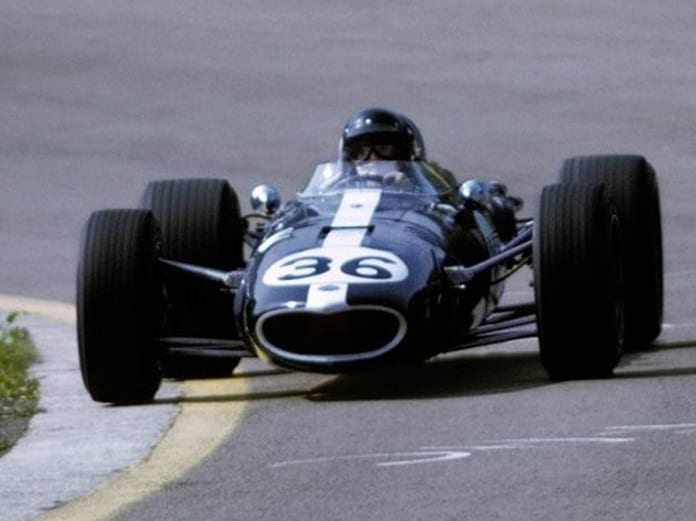In a career filled with diverse and remarkable achievements, Dan Gurney’s most significant victory was winning the 1967 Belgium Grand Prix in an Indy car-based Eagle of his own design and construction.
That epic event occurred because the Goodyear Tire & Rubber Co., fighting to loosen Firestone’s exclusive hold on the Indianapolis 500, approached Gurney and Cobra originator Carroll Shelby about forming a team to design and build Indianapolis cars. All American Racers was born.
The Eagle, with its distinctive beak-like nose, made its first Indianapolis appearance in 1966. It would dominate the top echelon of American open-wheel racing. Still considered one of the prettiest Indy cars ever, the Eagle soared to its zenith in 1973 when half the Indianapolis starting field was Eagles. They took five of the top 10 spots, including first and second.
“As a part of the deal,” explained Gurney, “Goodyear also gave us the OK to build a Formula One car and we actually developed the Formula One car from the Indianapolis car. The rules were so close that we even used the same bucks to make the skins of the monocoques.”
The Formula One Eagle debuted at the 1966 Belgium Grand Prix. Using a Coventry Climax four-cylinder engine, Gurney finished a respectable seventh as the race was run in a horrendous rainstorm.
While he was campaigning the Climax, a prototype engine was being developed. Known as a Gurney-Westlake, it was a three-liter, four-valves-per-cylinder V-12 designed by Aubrey Wood and built in Rye, England, by the incomparable Harry Westlake.
The engine first appeared in the Eagle at Monza late in the 1966 season. In April 1967, the Gurney-Westlake propelled Gurney to the pole and the race win in a non-points race at Brands Hatch.
By the time the 1967 Belgium Grand Prix rolled around, Gurney had built a new-generation Eagle to match the potent V-12. Dubbed the “Titanium Eagle,” the chassis was actually made of magnesium. The exhaust system and many other smaller pieces were indeed titanium.
Fresh from his Le Mans victory with A.J. Foyt the previous week, Gurney qualified just behind Jim Clark on the daunting, dangerous Spa-Francorchamps circuit.
“I got off to a lousy start,” chuckled Gurney, recalling the race. “It was one of those wouldn’t you know it kind of things. In those days the clutches were fragile. If I’d sat there and let it drag even a little bit, I feared it would fail later. So I was in neutral. When I thought it was about time to start, I slipped it into gear and it crept forward. Afraid that I would jump the start, I jumped on the brake about the time the starter waved the green flag.
“That dropped me back to seventh or eighth,” continued Gurney. “But I moved back up front and into the lead pretty quick. Then I noticed the engine had developed a high-speed miss. So, I started trying to save the engine and Jackie Stewart came around me.
“When he did that, I thought ‘I’m not going to do any good by babying the car and it might not spare the engine anyway. I need to just go for it.’
“So I did,” Gurney added. “I got back by Stewart and went all the way. That was it.”
Not exactly all of it.
In Gurney’s charge to front after the early setback, he set a new one-lap record of 148.590 mph and set a race record against the likes of Clark, Graham Hill, Chris Amon, Jack Brabham and Denny Hulme that earned Spa the honor of being the “Fastest Track in Europe.”
After the typical podium celebration, Gurney was rushed to a helicopter by Belgium police and whisked to a stadium packed with people, gathered for the sole purpose of seeing the winner of the Belgium Grand Prix.
“That was special,” recalled Gurney. “Especially hearing the national anthem played.”
Gurney’s spectacular victory on June 18, 1967 rewrote the history books. It was the first time an American driver had won a Grand Prix in an American-built car since Jimmy Murphy and his Duesenberg had won the French Grand Prix 46 years earlier.
Gurney’s stunning feat was also the first — and still the only time — in 100 years of Formula One competition that an American driver in a car of his own design and construction found victory.
It’s an achievement that most likely will never be duplicated.
